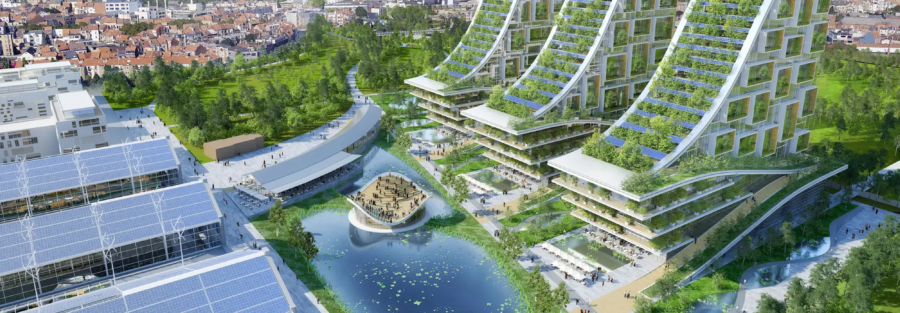Architectural design and green energy are intertwined in the pursuit of creating sustainable and environmentally friendly built environments. Architects play a critical role in incorporating green energy solutions into their designs to reduce energy consumption, minimize carbon emissions, and create spaces that are both functional and environmentally responsible.
Here’s how architectural design and green energy are connected:
Passive Design Strategies: Passive design strategies involve optimizing a building’s design to take advantage of natural energy sources, such as sunlight and wind. Architects can orient buildings to maximize daylight and ventilation, use shading devices to control solar heat gain, and design layouts that promote cross-ventilation.
Solar Energy Integration: Solar panels, also known as photovoltaic (PV) panels, can be integrated into building designs to harness solar energy and convert it into electricity. Architects can incorporate solar panels into roofs, facades, and shading structures to generate renewable energy on-site.
Wind Energy Harnessing: Architects can design buildings and structures that utilize wind energy for ventilation or even power generation. Features like wind turbines and wind-catchers can be integrated into the design to capture and channel wind energy effectively.
Energy-Efficient Building Envelopes: Architects can design energy-efficient building envelopes that minimize heat loss or gain. This includes using high-performance insulation, energy-efficient windows, and materials that have low thermal conductivity.
Green Roofs and Living Walls: Green roofs and living walls not only provide insulation but also contribute to energy efficiency by reducing heat island effect and improving indoor air quality. These elements can be integrated into architectural designs to enhance the building’s environmental performance.
Daylighting: Architects can design spaces that maximize natural daylight penetration. Well-designed windows, skylights, and light shelves can reduce the need for artificial lighting, leading to energy savings.
Energy-Efficient Lighting: Architectural designs can incorporate energy-efficient lighting systems, including LED lights and smart lighting controls. These systems optimize lighting levels based on occupancy and natural light availability.
Renewable Energy Integration: Beyond solar energy, architects can explore other renewable energy sources such as geothermal energy, biomass, and hydropower. The design can accommodate the integration of these systems while maintaining aesthetics.
Building Energy Management Systems (BEMS): Architects can plan for the integration of BEMS, which use sensors and controls to manage energy use within a building. BEMS optimize heating, cooling, lighting, and other energy-consuming systems based on real-time data.
Net-Zero and Positive Energy Buildings: Architects are at the forefront of designing net-zero energy and positive energy buildings that generate as much or more energy than they consume. These designs prioritize energy efficiency and renewable energy integration.
Material Selection: Sustainable material choices can also impact a building’s energy performance. Architects can select materials with low embodied energy and high thermal performance to reduce the overall energy footprint of the building.
Life-Cycle Assessment: Architects can consider the life-cycle energy impacts of building materials and systems during the design phase. This holistic approach ensures that the building’s energy performance is optimized over its entire lifespan.
By integrating green energy solutions into architectural design, architects can create buildings and spaces that are energy-efficient, environmentally responsible, and conducive to a sustainable future. This collaboration between architecture and green energy contributes to mitigating the impacts of climate change and promoting a healthier planet.



